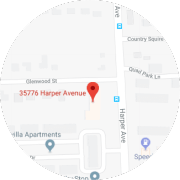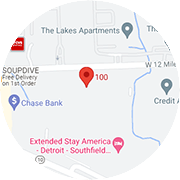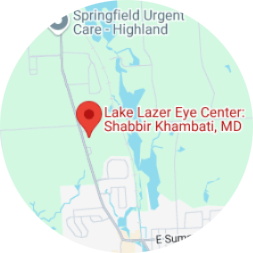 Epi-LASIK is a laser vision correction technique that combines the advantages of PRK and LASIK and eliminates most of their disadvantages.
Epi-LASIK is a laser vision correction technique that combines the advantages of PRK and LASIK and eliminates most of their disadvantages.
PRK uses amoils brush to remove the surface epithelium (the thin layer of skin covering the front surface of the cornea). Then the surface of the eye is treated with the laser. After the procedure, a bandage contact lens is placed in the eye for 4 to 6 days while the epithelium slowly regenerates itself.
The epikeratome laser-assisted keratomileusis procedure, (Epi-LASIK) uses a unique epikeratome to mechanically separate the epithelium to make a flap, similar to a traditional LASIK flap. Unlike LASIK, no sharp blades or knives are required.
Advantages of Epi-LASIK
- The epikeratome eliminates the need for the alcohol used in PRK and LASEK. Since alcohol is toxic to epithelial cells, removing the alcohol application from the procedure results in faster healing and less pain for patients.
- The epikeratome produces a precise, reproducible separation of the epithelium. With Epi-LASIK, many of the flap complications of LASIK are reduced.
- Epi-LASIK results in less post-operative haze. The epithelial flap may protect the bare surface of the stroma (the inner tissue of the cornea) after laser treatment and prevent the influx of inflammatory cells from tears.
- Because the corneal nerves are not severed as with LASIK, there’s a lower risk of extended post-operative dry eye problems.
- Epi-LASIK is is often a better option than LASIK for those with thin corneas. With this procedure, approximately thirty-five percent less tissue is removed. That means that many patients who have thin corneas are now candidates forlaser vision correction.
- Epi-LASIK provides a more predictable outcome for wavefront guided “Custom” laser vision correction. Perhaps because LASIK can induce third order aberrations
Epi-LASIK Procedure
- Only the epithelium is separated
- The laser is centered and the ablation is performed
- The surface has been reshaped
- The epithelial flap is repositioned
Epi-LASIK is For Those Who:
- want to reduce or eliminate their dependence on glasses or contacts
- are at least 18 years of age
- have had a stable eye prescription for at least one year
- have no health issues affecting their eyes
- have no signs of glaucoma or cataracts
- What to expect on surgery day
You will arrive at the laser center about half an hour prior to your procedure. Once you have been checked in you may be offered a sedative to help you relax. You will then be prepared for surgery. The area around your eyes will be cleaned and a sterile drape may be applied around your eye. Anesthetic eye drops will be used to numb your eyes; no injections or needles will be used. When your eye is completely numb, an eyelid holder will be placed between your eyelids to keep you from blinking during the procedure.
Next, the epikeratome will be used to create a hinged epithelial sheet, which will be reflected onto a contact lens. During this process, you may feel a little pressure, but no pain. You will then be asked to look directly at a target light while the laser reshapes your cornea. The Excimer laser will be programmed with the information gathered in your pre-operative exam. The laser treatment will be completed in less than a minute or two, depending on the amount of correction needed. Then, the epithelial sheet will be replaced along with the contact lens.
Your vision will probably be a little blurry at first, so someone will need to drive you home. You should relax for the rest of the day. You may experience some discomfort for 12 to 24 hours, but this is usually alleviated with an over-the-counter pain reliever. Some people experience sensitivity to light, and watering or swelling of their eyes for a few days following their procedure.
Realistic Expectations
The decision to have Epi-LASIK is an important one that only you can make. The goal of any refractive surgical procedure is to reduce your dependence on corrective lenses. However, we cannot guarantee you will have the results you desire. The vast majority of our patients are extremely happy with their vision after Epi-LASIK and can do most activities without dependence on corrective lenses.
Serious complications with Epi-LASIK are extremely rare. Epi-LASIK is a safe, effective and permanent procedure, but like any surgical procedure, it does have some risks. Many of the risks and complications associated with this procedure can be reduced or eliminated through careful patient selection and thorough pre-operative testing using the latest diagnostic technology.
After Epi-LASIK, you may experience some visual side effects. These visual side effects are usually mild and diminish over time. But there is a slight chance that some of these side effects won’t go away completely, such as feelings of dryness, glare, and halos.
Since everyone heals somewhat differently, some patients may overreact to the procedure and some may underreact resulting in overcorrections and undercorrections. Once the eye has stabilized (3 to 6 months) you and your doctor can discuss whether a re-treatment could help fine-tune your vision if you are over or under corrected.
After a thorough eye exam, you and your doctor will determine if Epi-LASIK is an option for you. If you are a good candidate, you will be given additional information about the procedure that will allow you to make an informed decision about whether to proceed. Be sure you have all your questions answered to your satisfaction.

 586-792-3891
586-792-3891




